If you’re not sure how to introduce activities using sensory tools to support tactile play and children who don’t like messy hands, this post will give you the ideas you need to get started.
I’ve brought together a visual feast of activity ideas using tools to help inspire you. All of the activities I’ve included use very basic, budget friendly materials and most can be found around the home.
Regularly exposing children to sensory play activities and opportunities is one of the best ways that educators and parents can support children to challenge themselves and turn stressful ‘messy hands - don’t want to touch’ experiences into moments of joy and empowerment.
So, if you haven’t yet read the previous post titled Sensory Strategies For Children Who Avoid Tactile Play I would encourage you to pop over and start there before coming back to review the ideas below and decide what activities you would now like to try and include in your program or learning environments.
If you are ready to introduce activities using sensory tools then let’s take a look at some of my favourites (and the children’s) from the past few years.
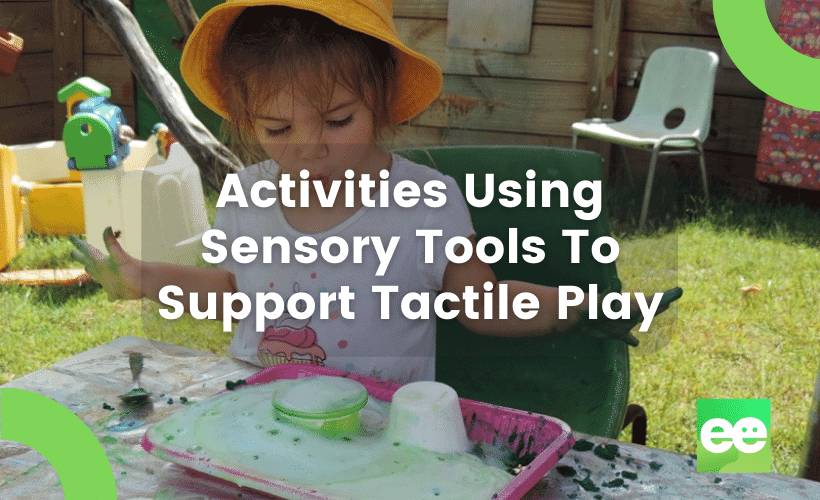
Sensory Activity Ideas And Tools To Support Sensory Play
Sieves, Strainers, Scoops & Whisks


Children can choose whether to touch the water, the bubbles or just the scoop and whisk with these activities. Control is in the child’s own hands as they build individual comfort levels and confidence.





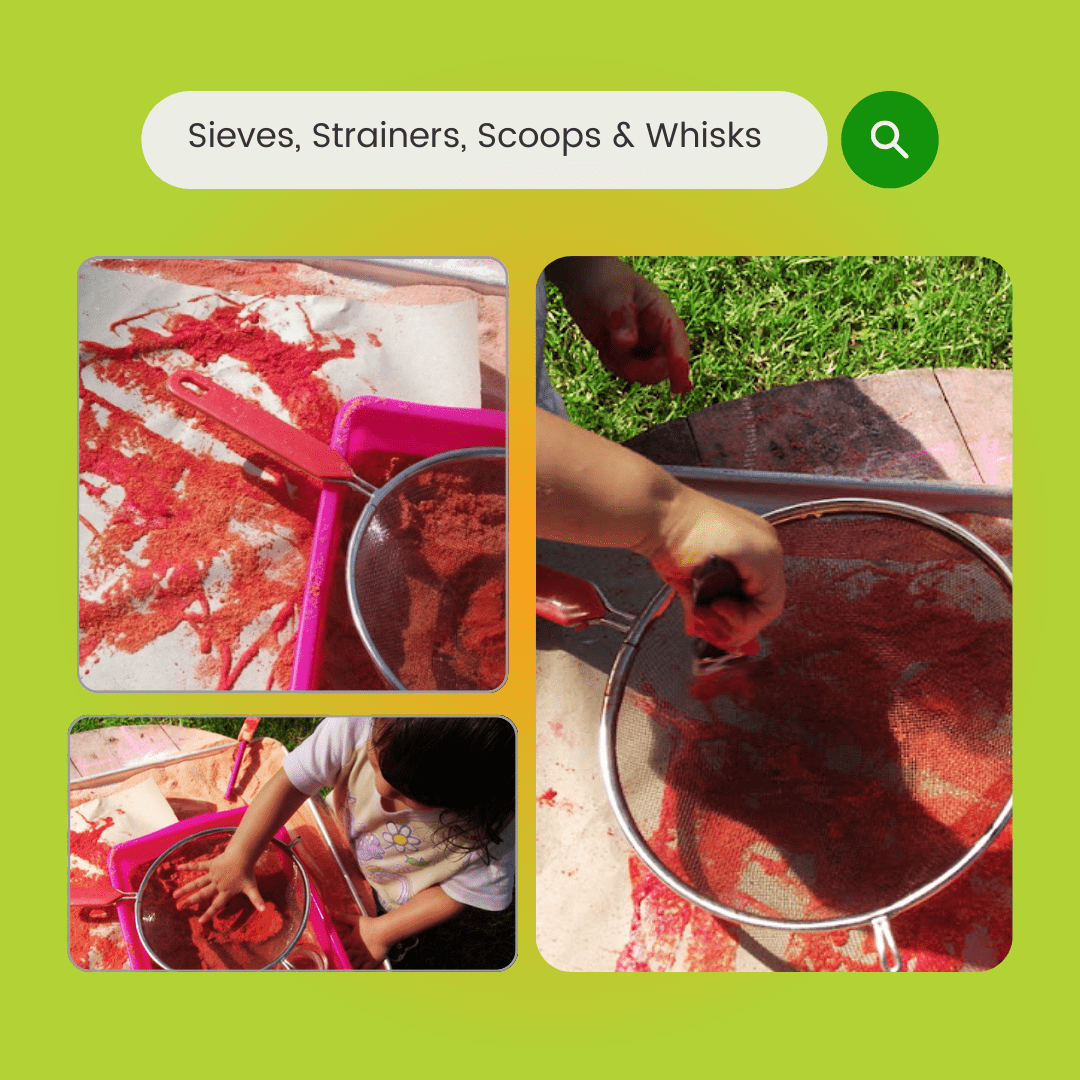
Tongs and Tweezers
Tongs are a fantastic tool for those children who really don’t want to get caught touching a particular texture or surface just yet. Other children can choose whether to use the tongs in their play or not so no one feels singled out.




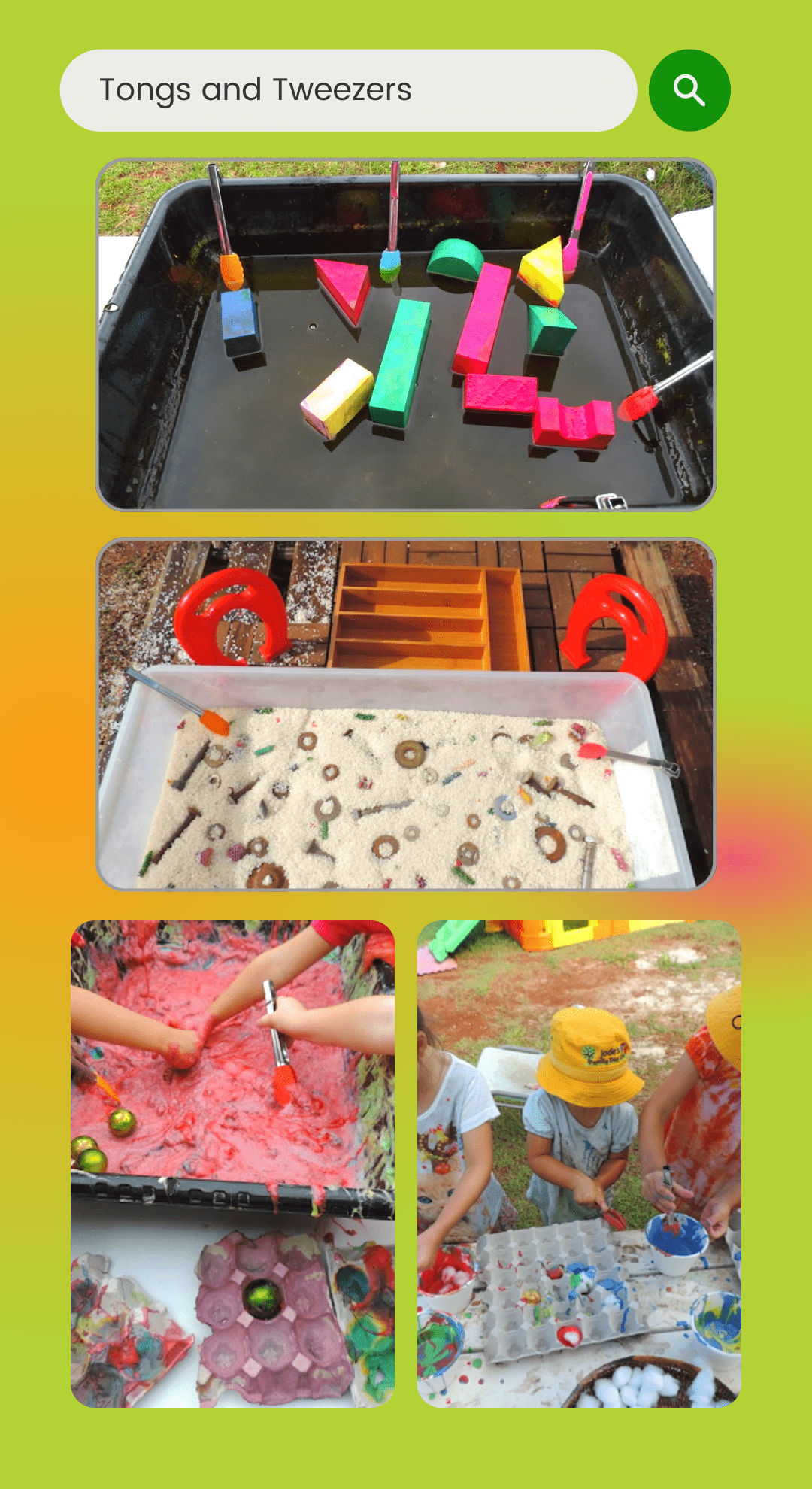
Spray and Squeeze Bottles
Build your sensory resource kit by repurposing tomato sauce/paste/mayonnaise and similar squeeze bottles. They work well with thin acrylic paint or (my preference), is a little coloured edicol dye mixed with water - easy for toddlers to manipulate and those who don’t want to touch the liquid or get frustrated easily because the coloured water paint will flow faster...or just use plain water without colour!
You can also purchase spray bottles cheaply from the garden or discount shops. Be mindful that toddlers will find this squeeze and release trigger more difficult so you might need to provide some support but they are excellent for strengthening those wrist and fine motor muscles.
Defining the space by using a tray, tub or similar can also be helpful for those easily overwhelmed in a larger space.

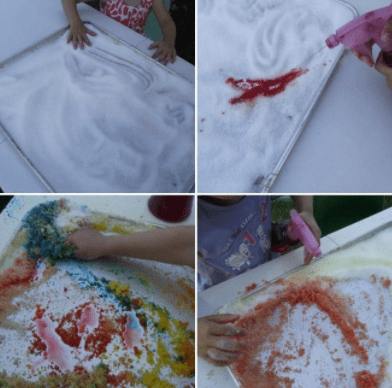



Using the bottles as an intermediary tool allows children to make the decision on how messy they want their hands to get. They remain in control.
Always have your bucket close by for washing hands if it’s a particularly ‘goopy’ or messy activity though so they can control their own comfort level.
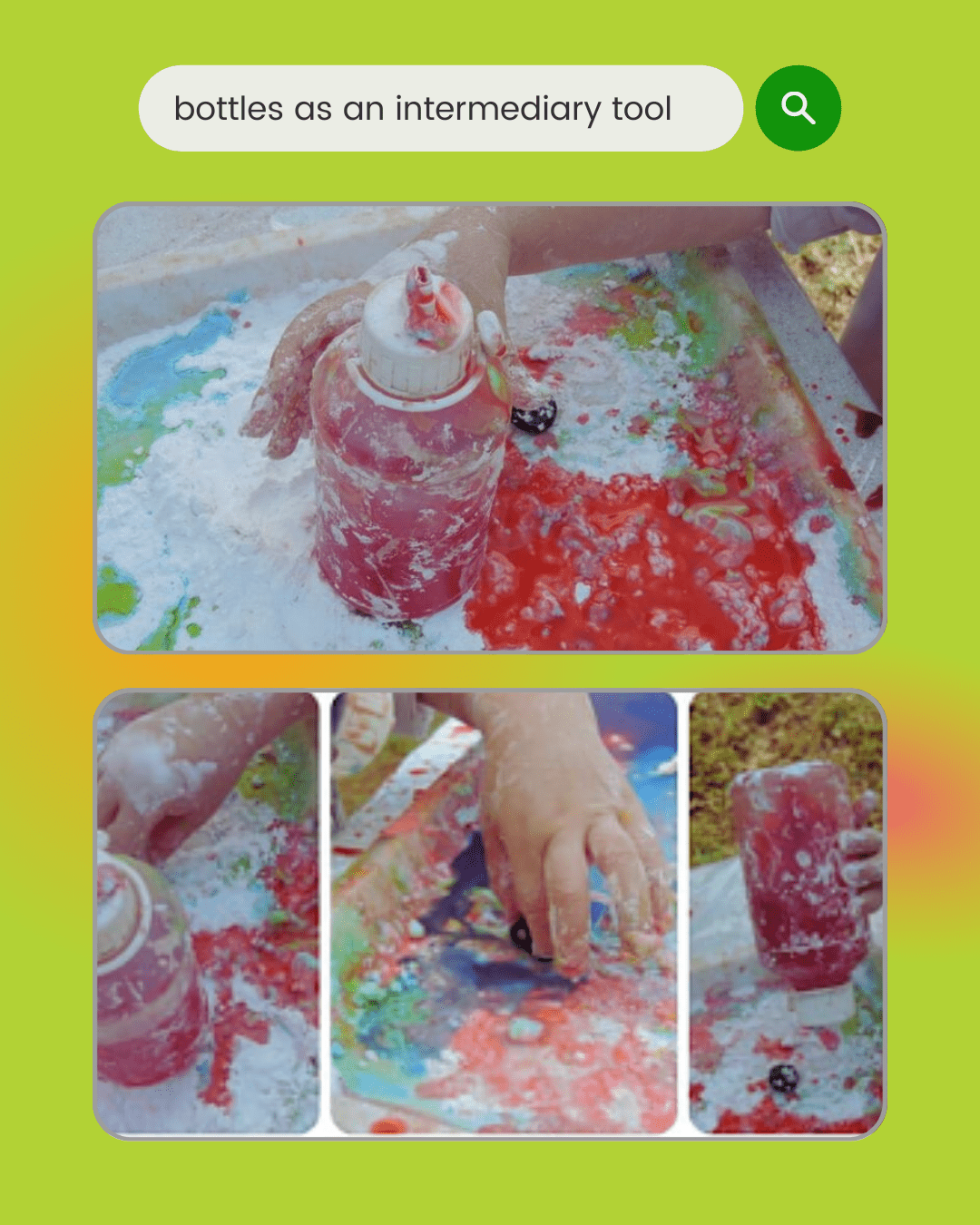
Tomato paste bottles tend to have a large hole in the top so they also work better for thicker liquids or paints.


Would you believe this little lad once upon a time hated his hands being messy?





Try repurposing juice and water bottles and turn them into paint squeeze bottles by drilling or poking a hole into the lids - the larger the hole obviously the easier and faster the liquid will flow out when squeezed.
Using squeeze bottles for the thick, sticky pva glue kept those who didn’t want the collage materials to stick to their hands happy and still able to express themselves creatively.

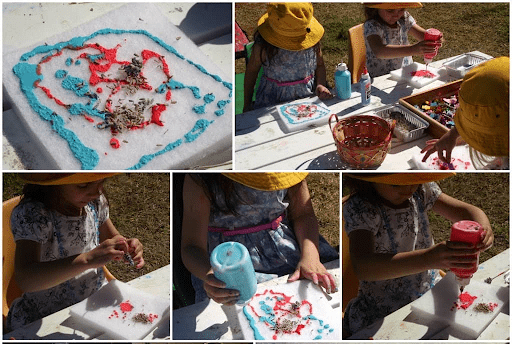
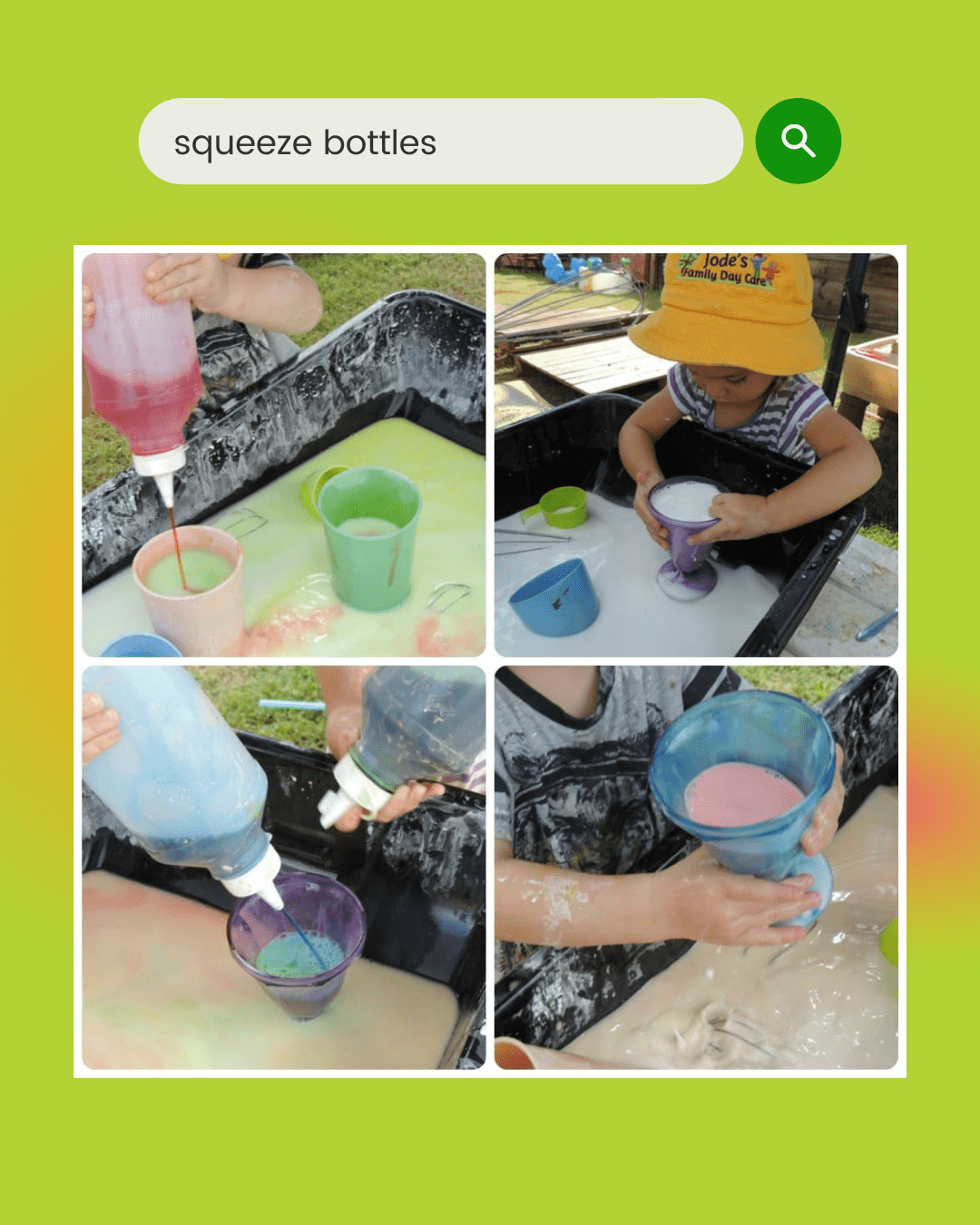
Stampers & Swatters
Check those kitchen drawers, thrift and op shops for materials you can turn into stampers.
Make sure they are easy to grasp and have enough space between where they can hold and where they make contact with the paint or other material.
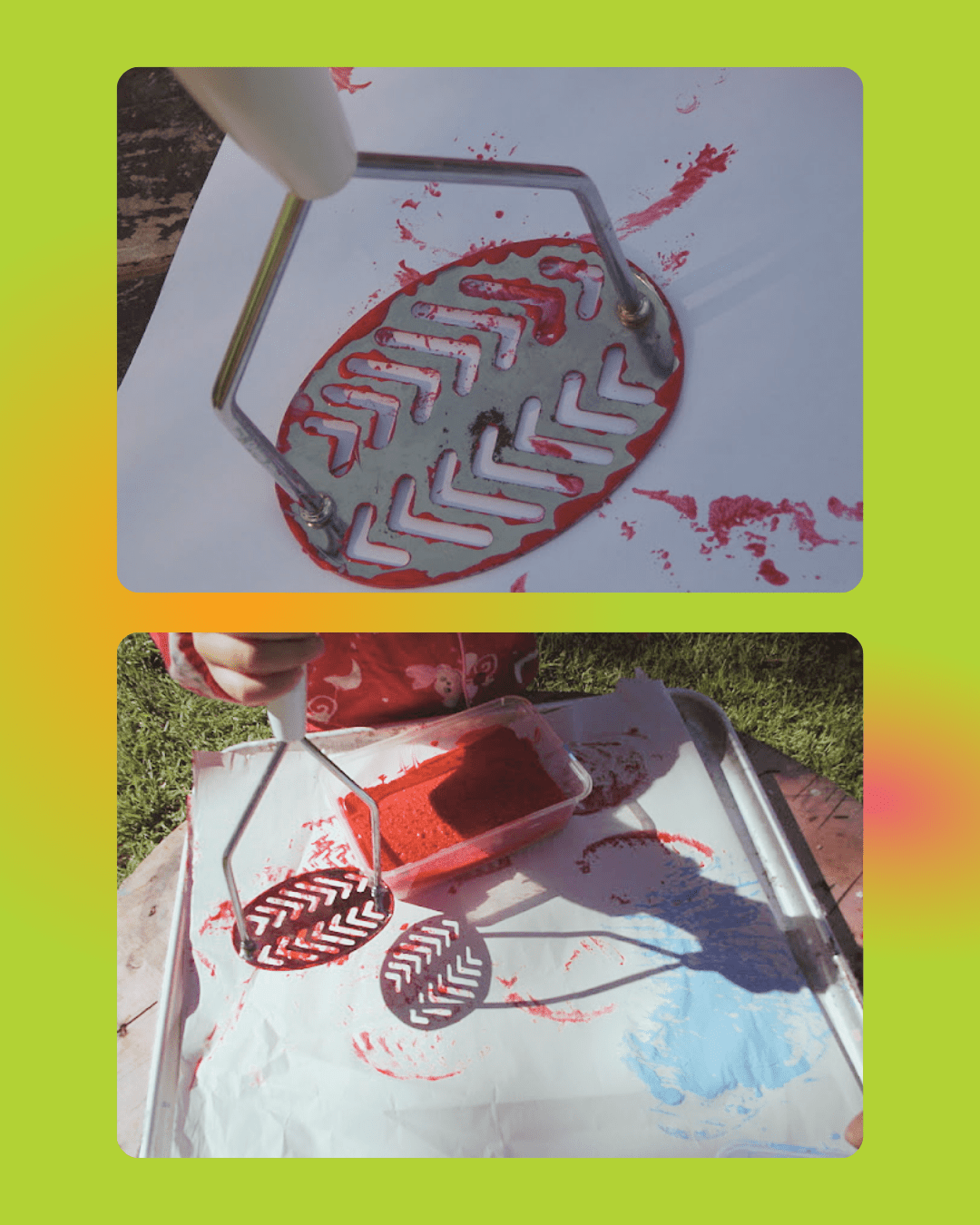
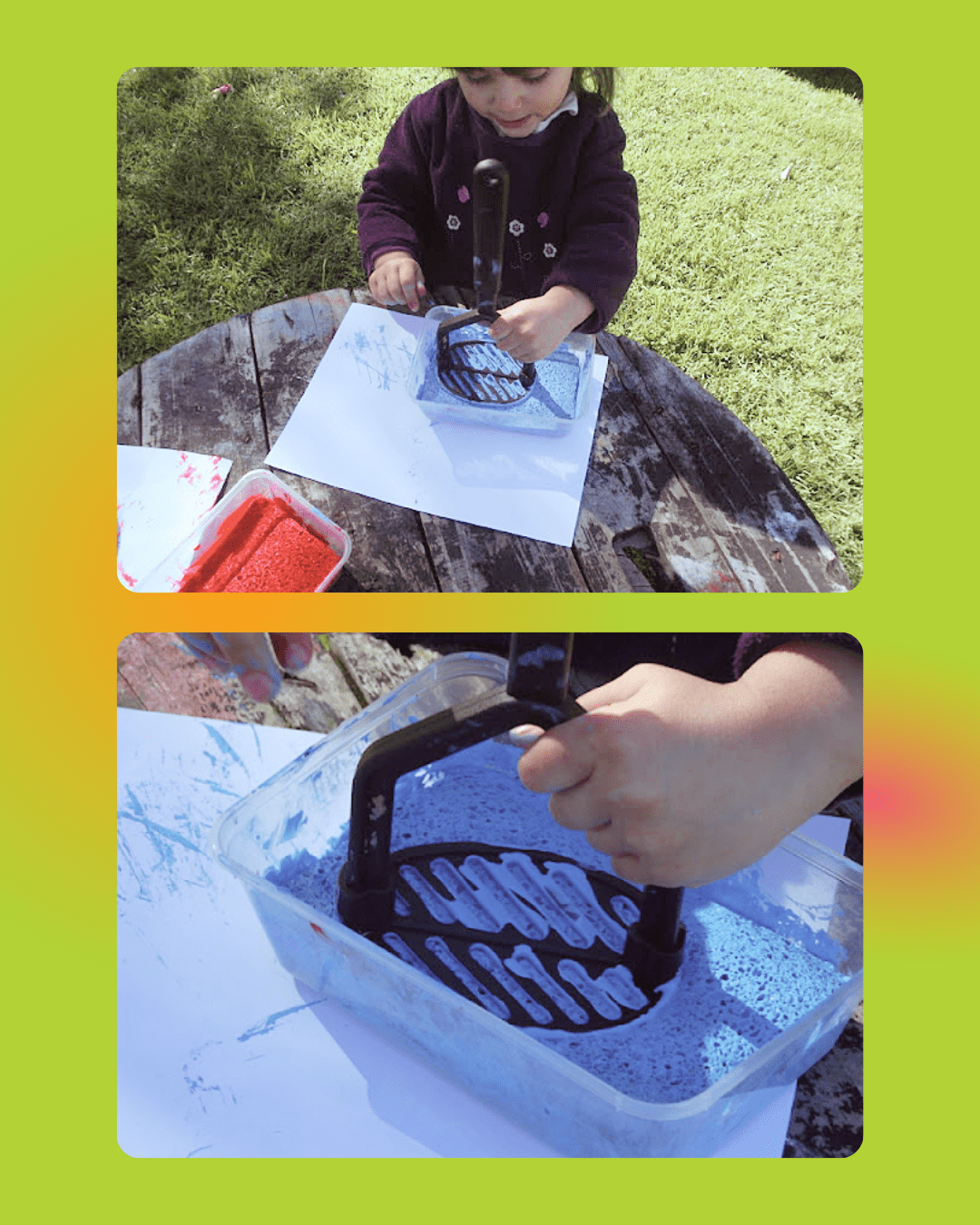

This investigation slowly progressed from this first step through to…



Full hands on tactile discovery...as long as the bucket of water was close by!

Fingers that weren’t comfortable touching the cold water confidently pick up the ‘treasures’ caught with a fly swatter instead.

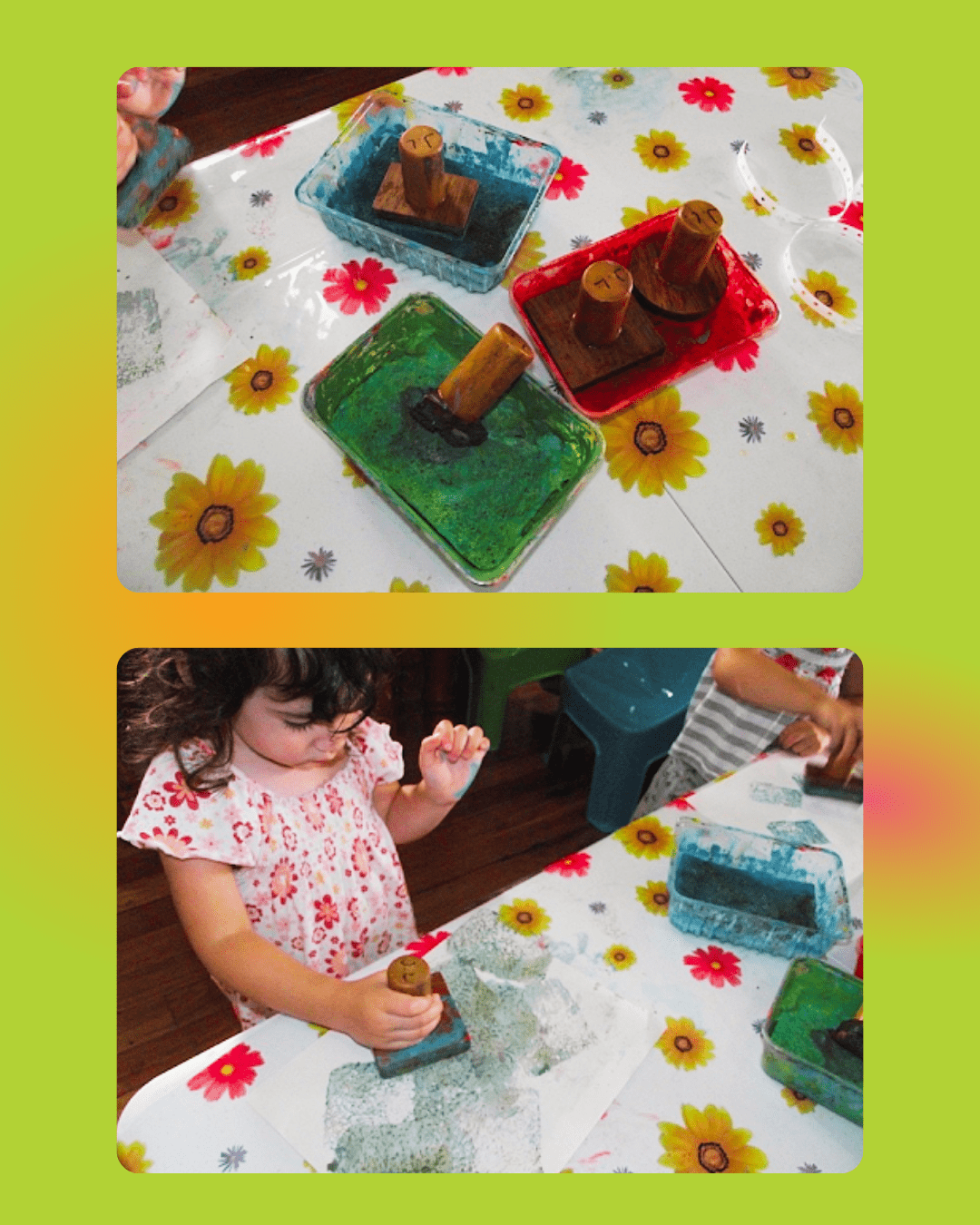
You can easily make your own stampers with some wooden dowel glued to kitchen sponge on wood offcuts.
We’ve used these for over 20 years with our DIY paint sponge pads - always popular with those children who don’t want to touch the paint (or only a little of it as the sponge soaks up the drips and glugginess).
Making your own sponge paint pads for stamping activities are an excellent tool to have in your sensory toolkit.
They allow little fingers to avoid the squishy texture of the paint if they want to.
Just pop a damp kitchen sponge into a clean takeaway container then add paint. Pop the lid on when done to reuse for another day.



Basters, Eyedroppers & Syringes
Easily found in a variety of sizes they are a simple tool to provide an initial barrier to the ‘mess’ and as the play progresses children tend to become more absorbed in the patterns and designs they are making rather than what their hands are touching usually.
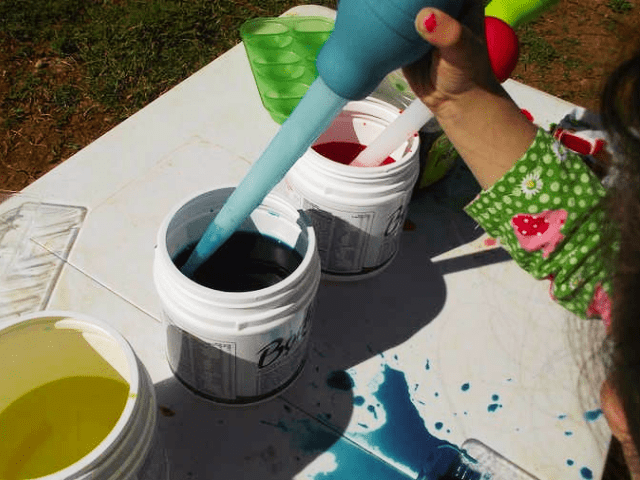


Old medicine droppers washed well are a budget friendly option.

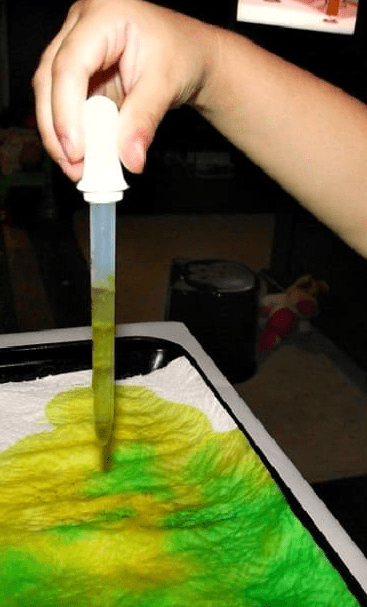
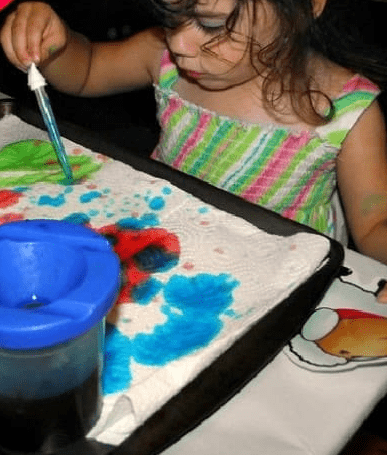
Taking it slowly and being very clear about what's going to happen...You could touch the water just a little bit to get the eyedropper out - do you want to try?

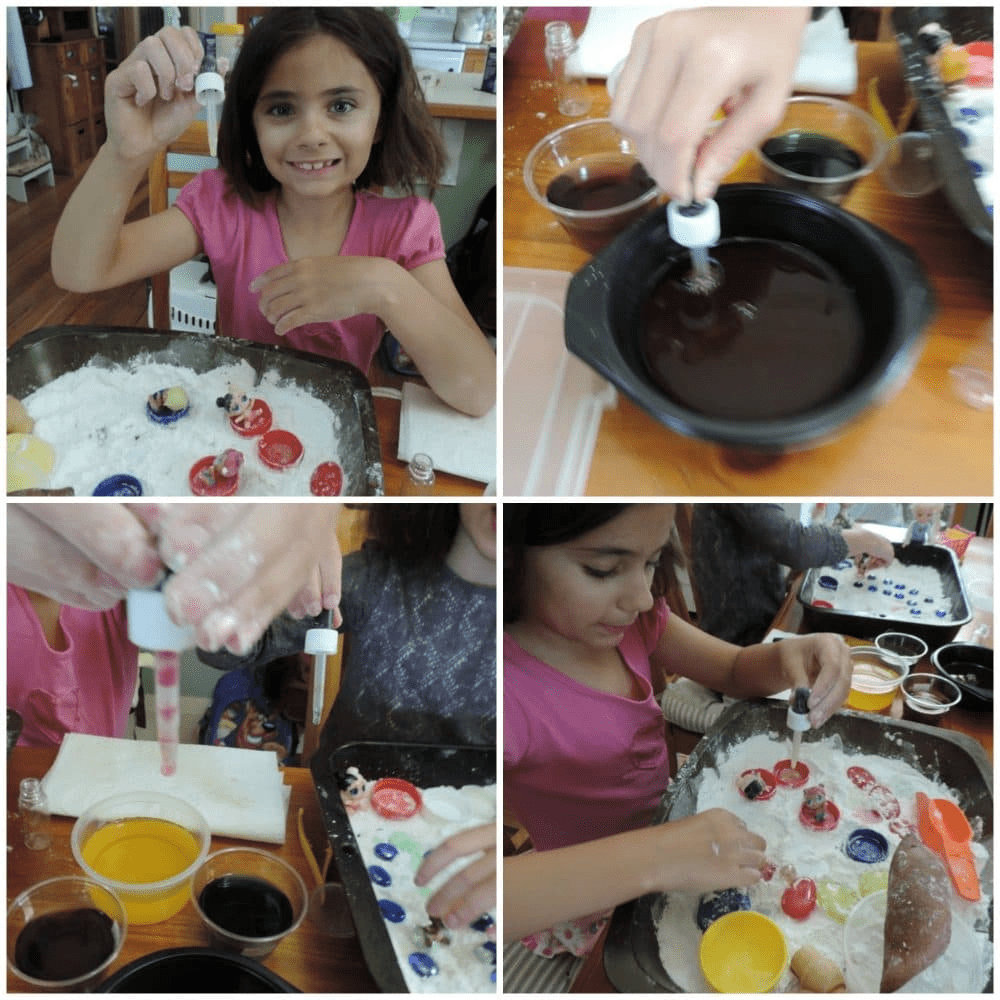
Older children who don’t like getting ‘messy hands’ usually enjoy the creative self expression and STEM fun this activity provides. See how to make the fizzy tray here.

Sponges & Pegs
Another tool I’ve been using since I first entered early childhood over 30 years ago. They are so versatile and I've used them with toddlers through to school age children across various activities.


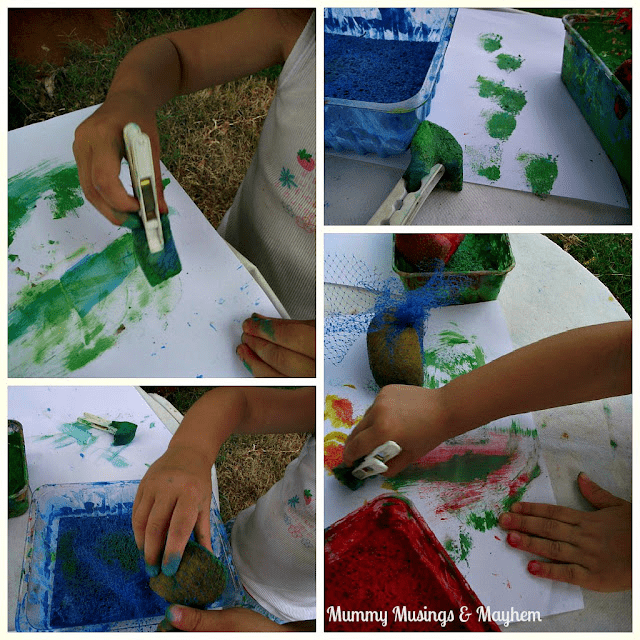
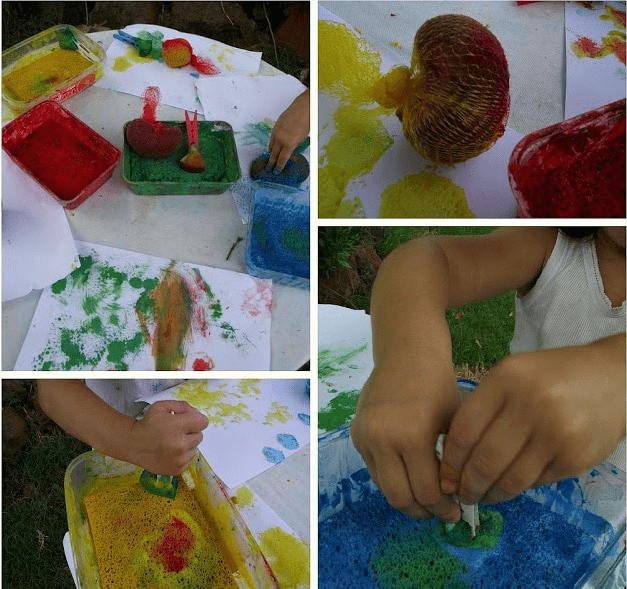
Keep that bucket or bowl of water for repetitive handwashing close by so those feeling uncomfortable with the textures can wash and then return to the activity when ready.
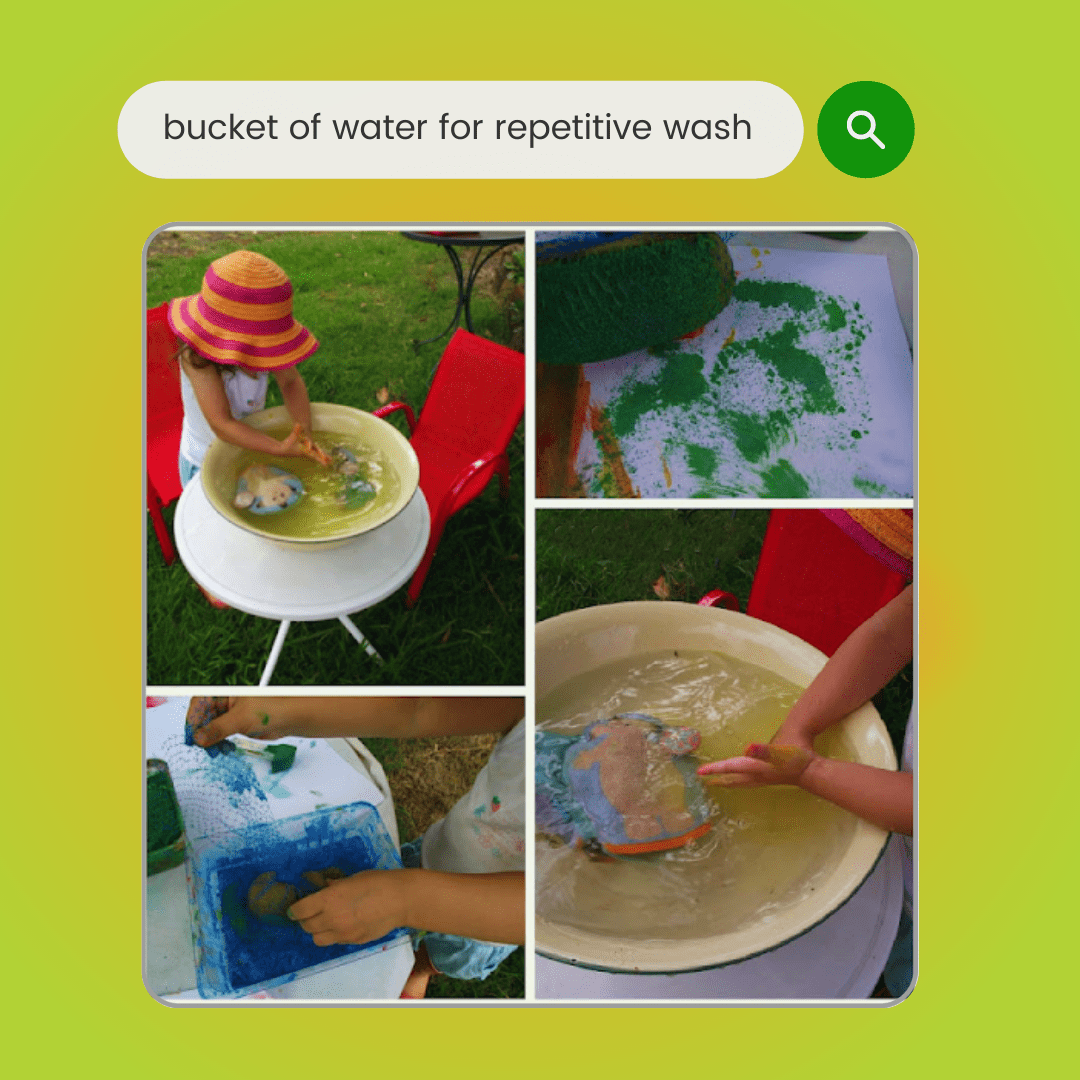

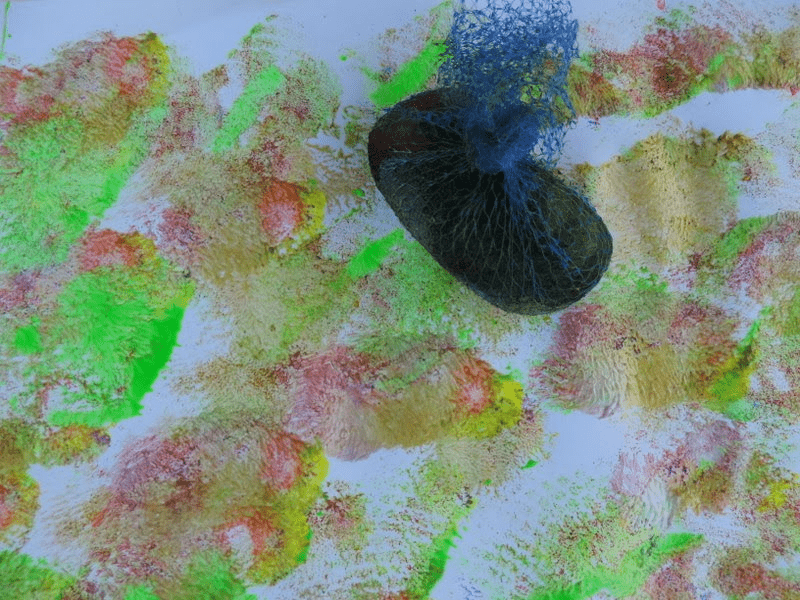
Don’t throw out those fruit mesh bags - cut up some bath sponges into smaller pieces, put them inside a piece of the netting and knot firmly ...now you have your own mesh dabbers.
Scourers offer a rougher texture, so be aware that they might not be tolerated by those children who dislike rough textures but many will love this feeling and just want to hold and touch instead of using as a painting tool..

I also found some in the discount shop that had a handle attached - always be on the lookout for how you can use the same material or tool in different ways to extend confidence and play. No need for a huge collection of expensive ‘sensory’ resources.


Tools With Playdough & Clay
Even if children don’t like the texture of dough or clay, it doesn’t mean they can’t have fun with this simple activity - just add loose parts and other tools and let them choose their comfort level - will they choose to poke, press, touch or manipulate using their hands or tools?
Think outside the cookie cutters and introduce something different to ignite engagement and use as a tool to eventual touching.

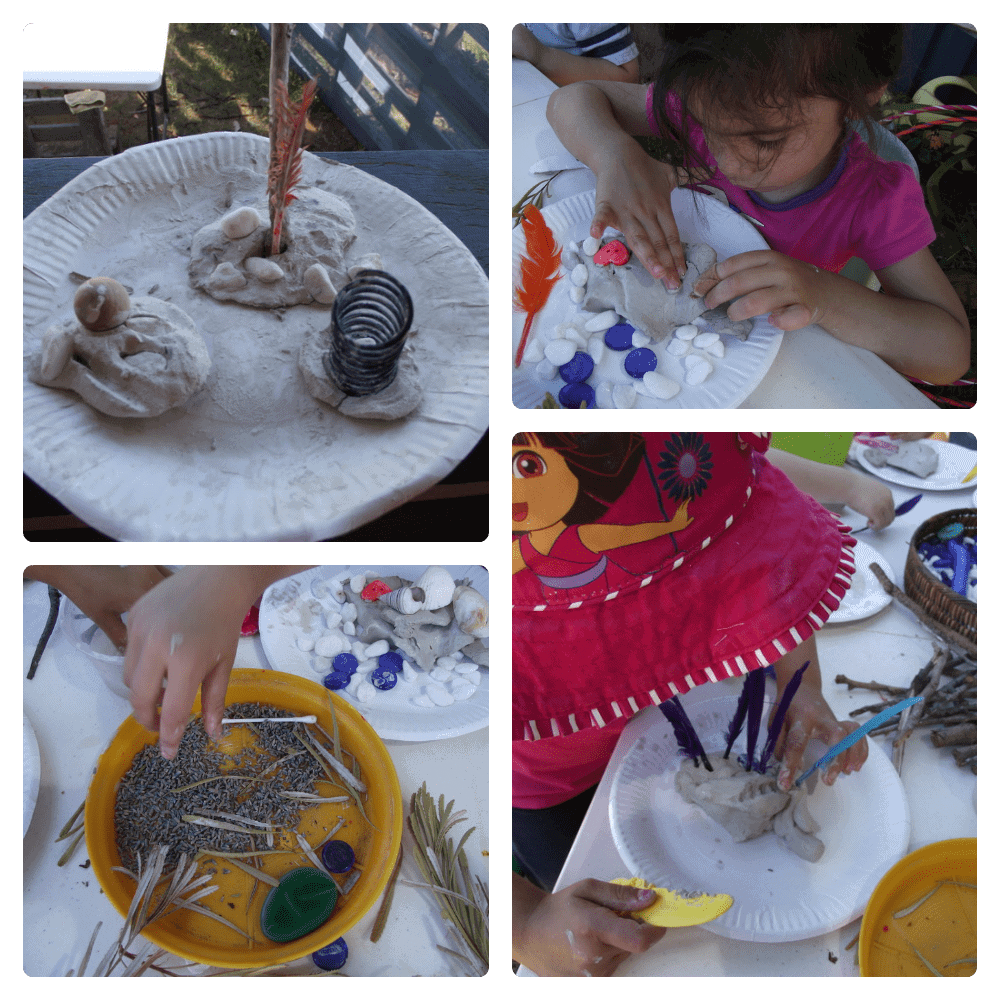
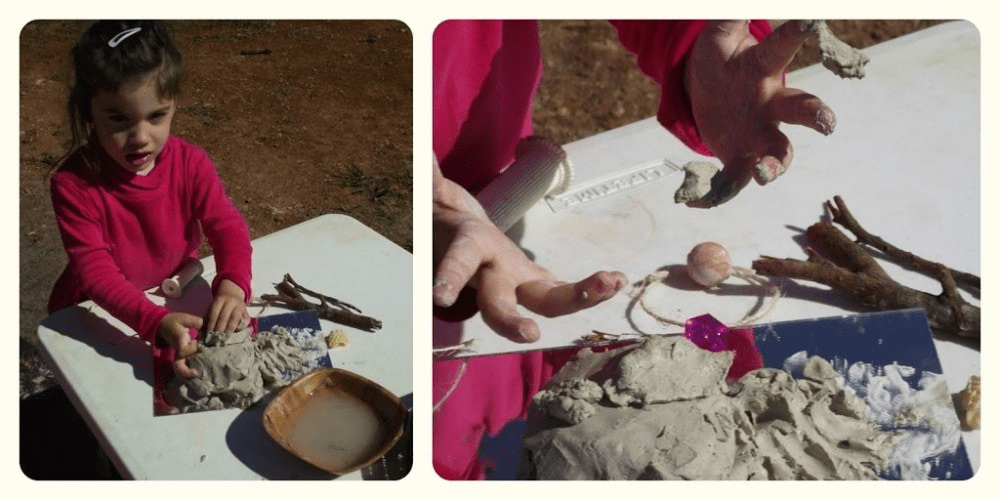
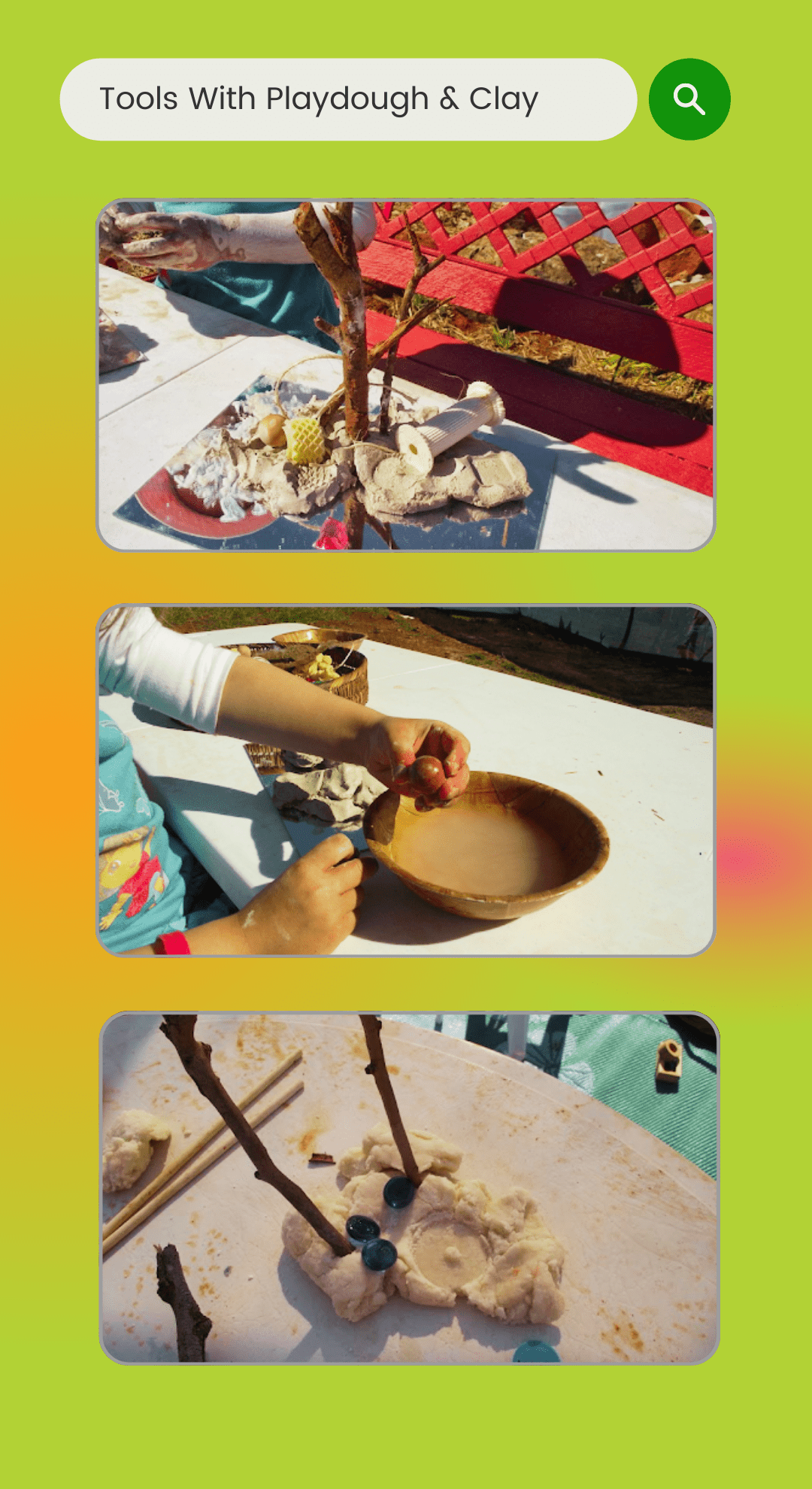


In this activity, the child's confidence progressed from arranging sticks ON the dough...
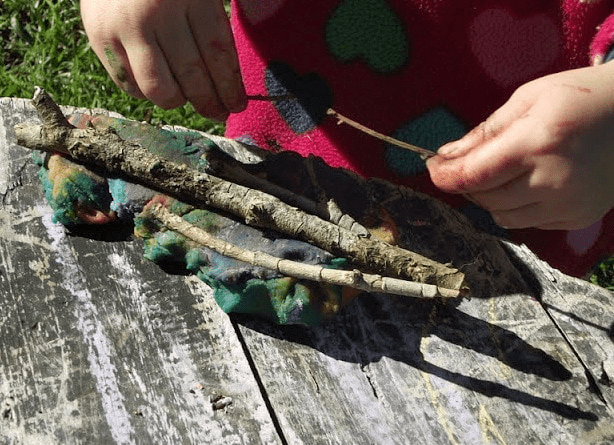
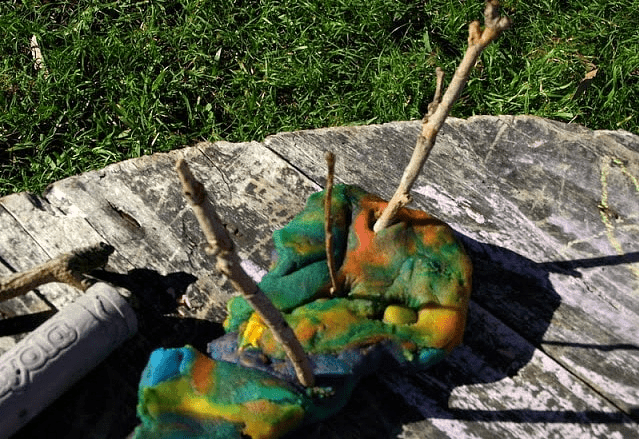
Then INTO the dough using more pressure..
To finding other textural elements to ‘decorate’ the dough and express creativity...without needing to actually pick up and manipulate the dough as other children were doing.
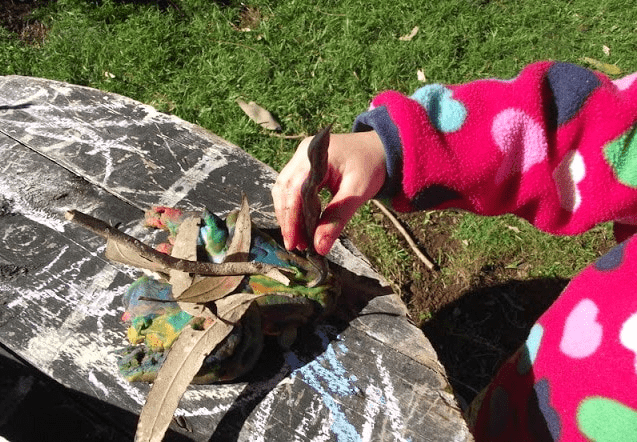
Providing a selection of different textured materials from nature can also be a fun way for children to decide what meets their comfort level by having an opportunity to choose the texture they want to press or poke or just hold.
Outside The Box Tools…
These are the ones early childhood educators tend to see through different eyes in the $2 discount shop.
Who else would go up to the counter with 8 toilet plungers and 10 men’s shaving foam brushes?
We look at simple everyday items and wonder what else we could do with them.
How would a child enjoy investigating and playing with these?
I often start out using them as painting tools but they also become valuable open ended materials children can incorporate into their play in different ways when simply left on a shelf with easy access.
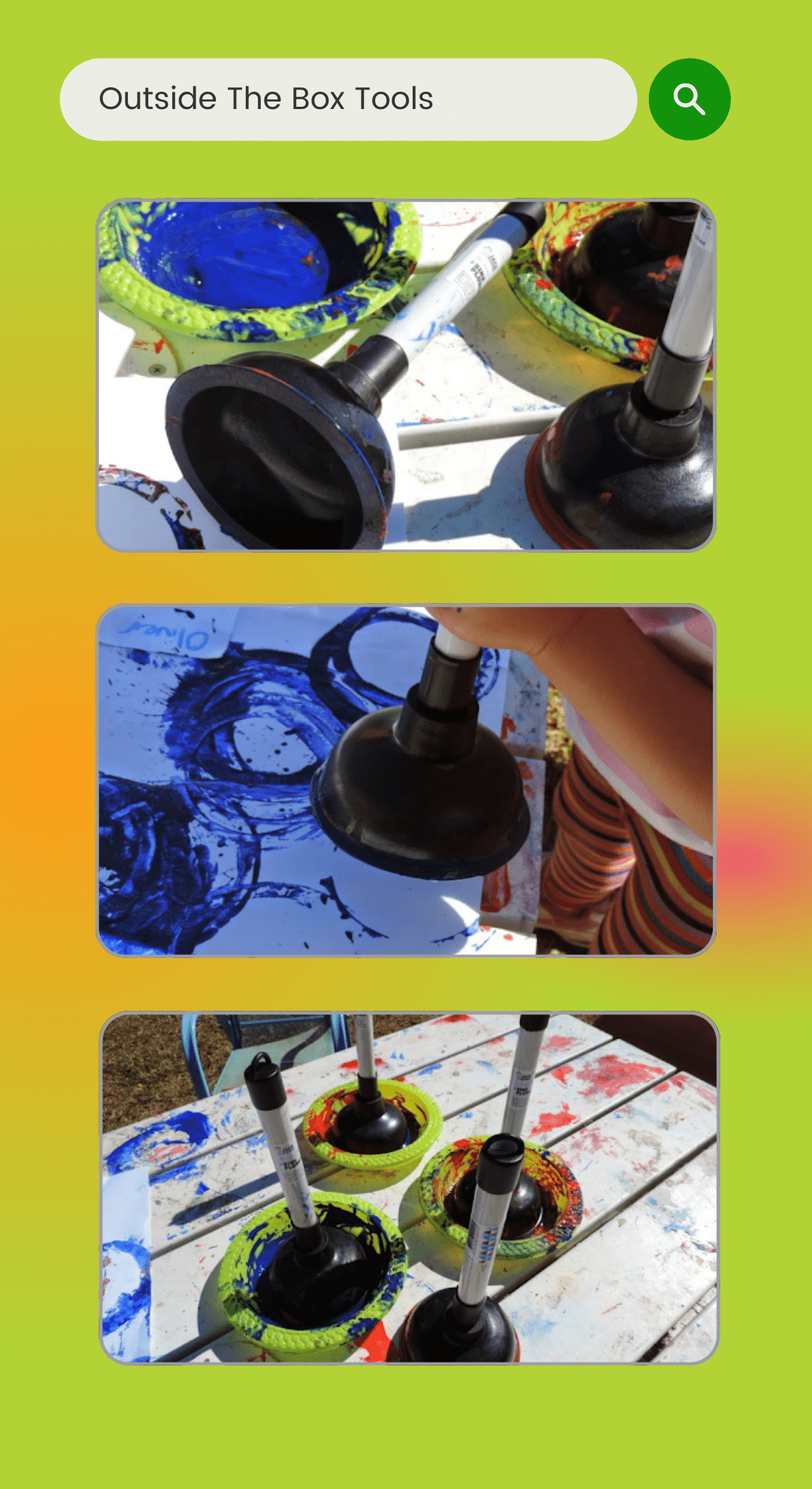
These gloves provide a 1st step to painting with the hands or feet, but keep in mind that some children may not like having to ‘squish’ to get the paint to come out...or the feeling of rubber.
Observe what they are comfortable with then modify as needed.
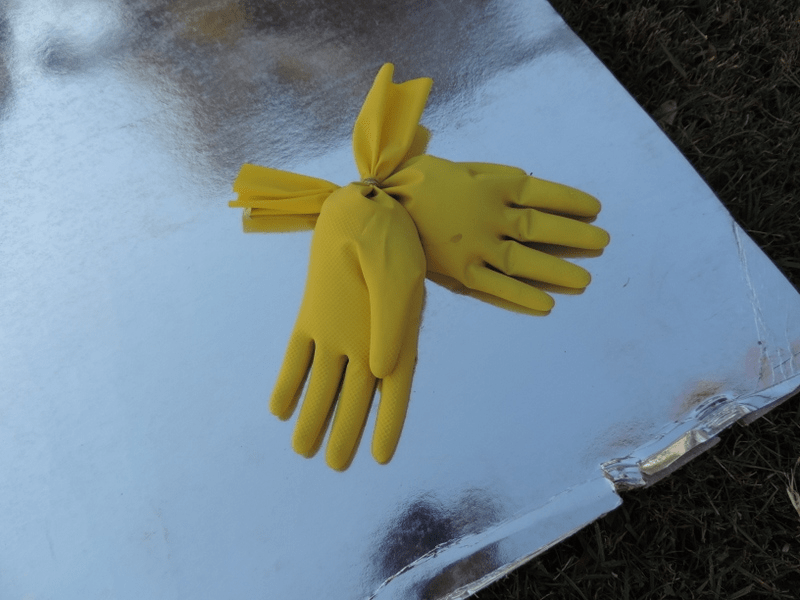

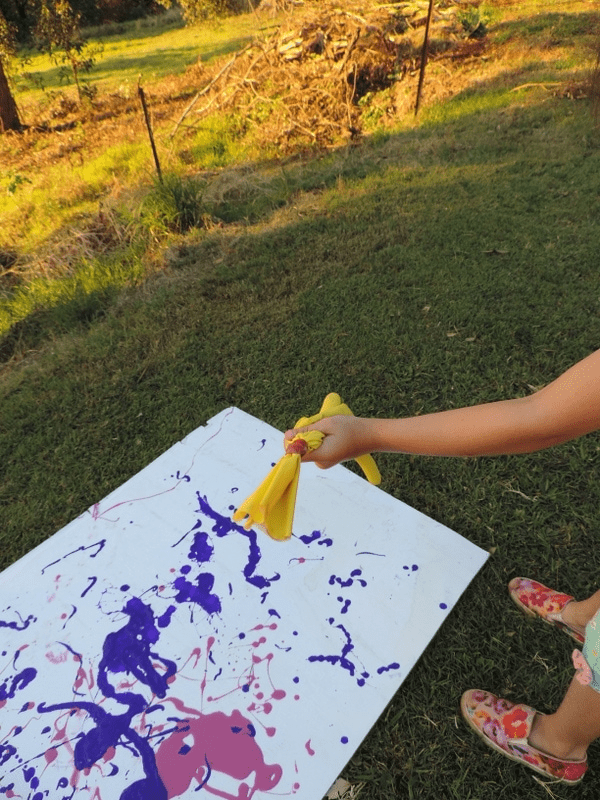
Lever out the ball from a roll on deodorant bottle, fill with watered/thinnned down acrylic paint then use the bottle as the handle to avoid touching the paint.
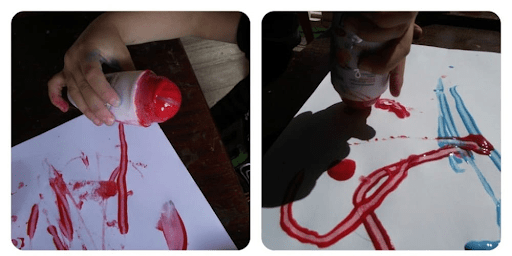
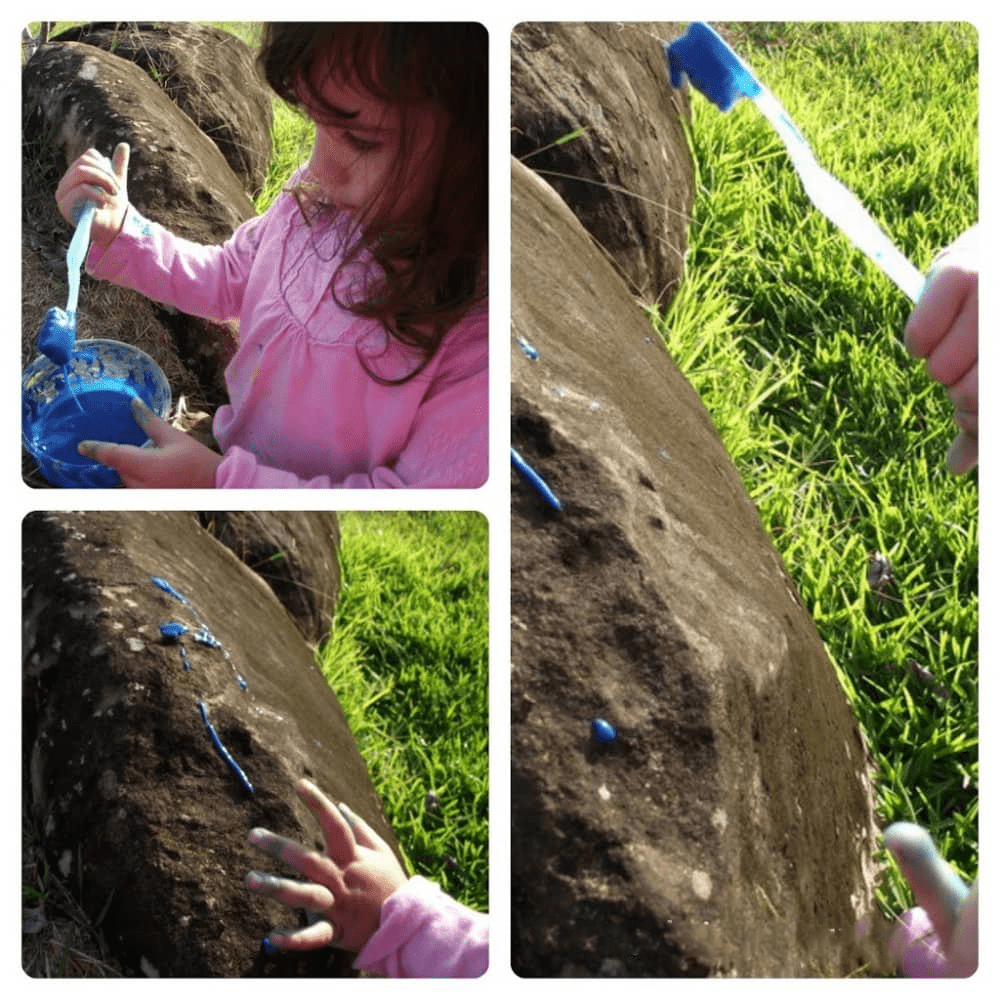
Toothbrushes work well too - even if the child isn’t confident with their grip or fine motor muscle strength yet.
The food items in activity below had already been used in baking (passionfruit & lemon butter - yum!)- so there wasn’t any food waste involved, we just decided to extend the sensory and creative fun with them before the shells went into the compost.
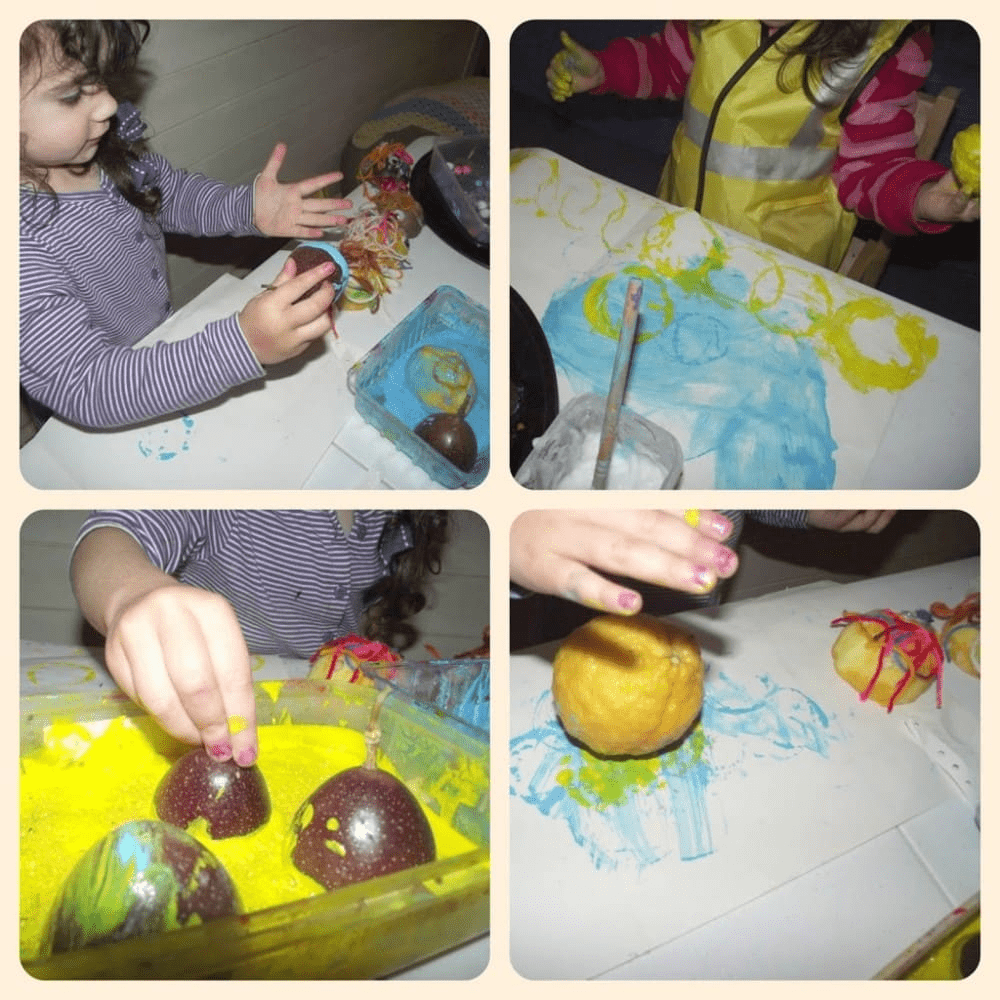
These are from a packet of purchased craft feathers but we normally just pick them up off the grass, give them a wash then paint! They also work well with just plain water as a first step if you don’t want to add colour or use paint.
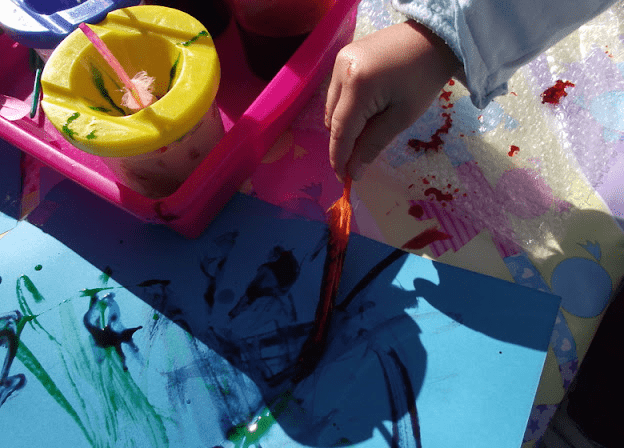

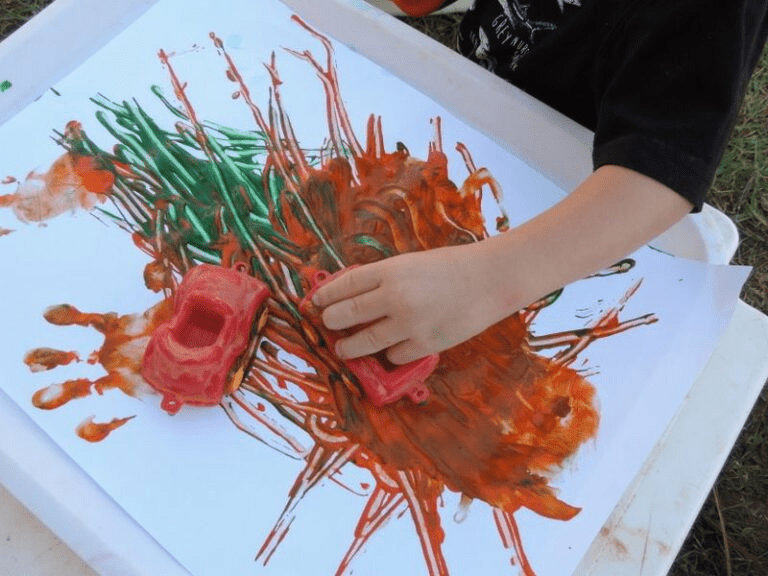
Who doesn’t love car painting?
I’ve used this strategy many times with children who love their cars... but the touch of paint not so much!
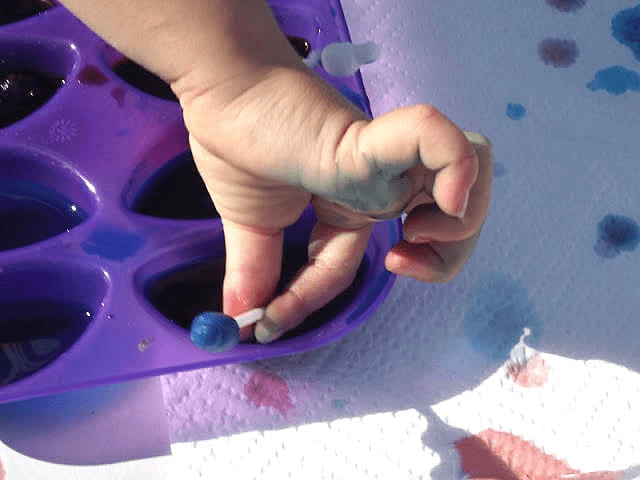
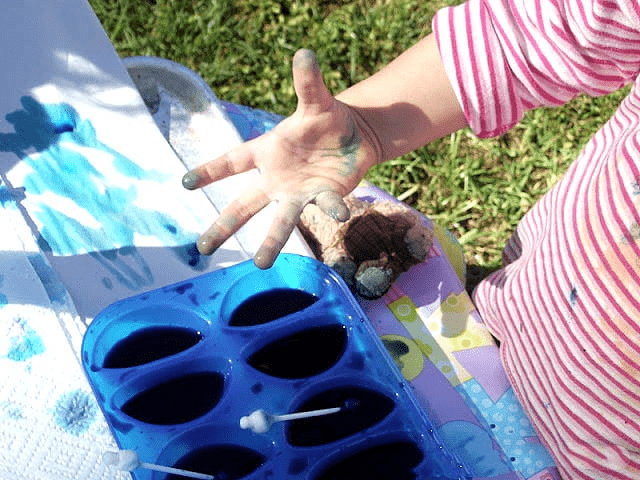
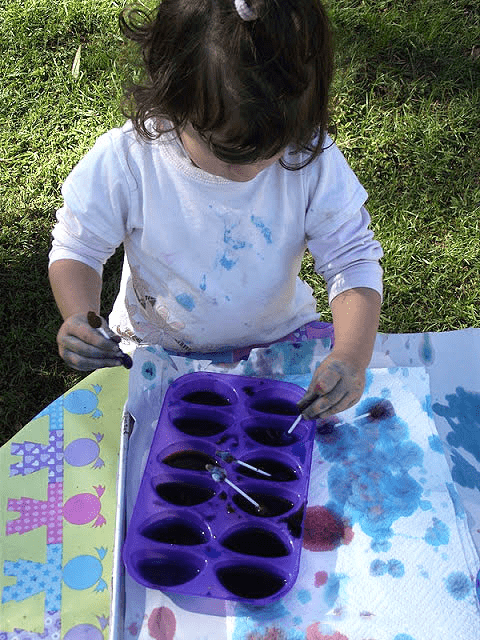
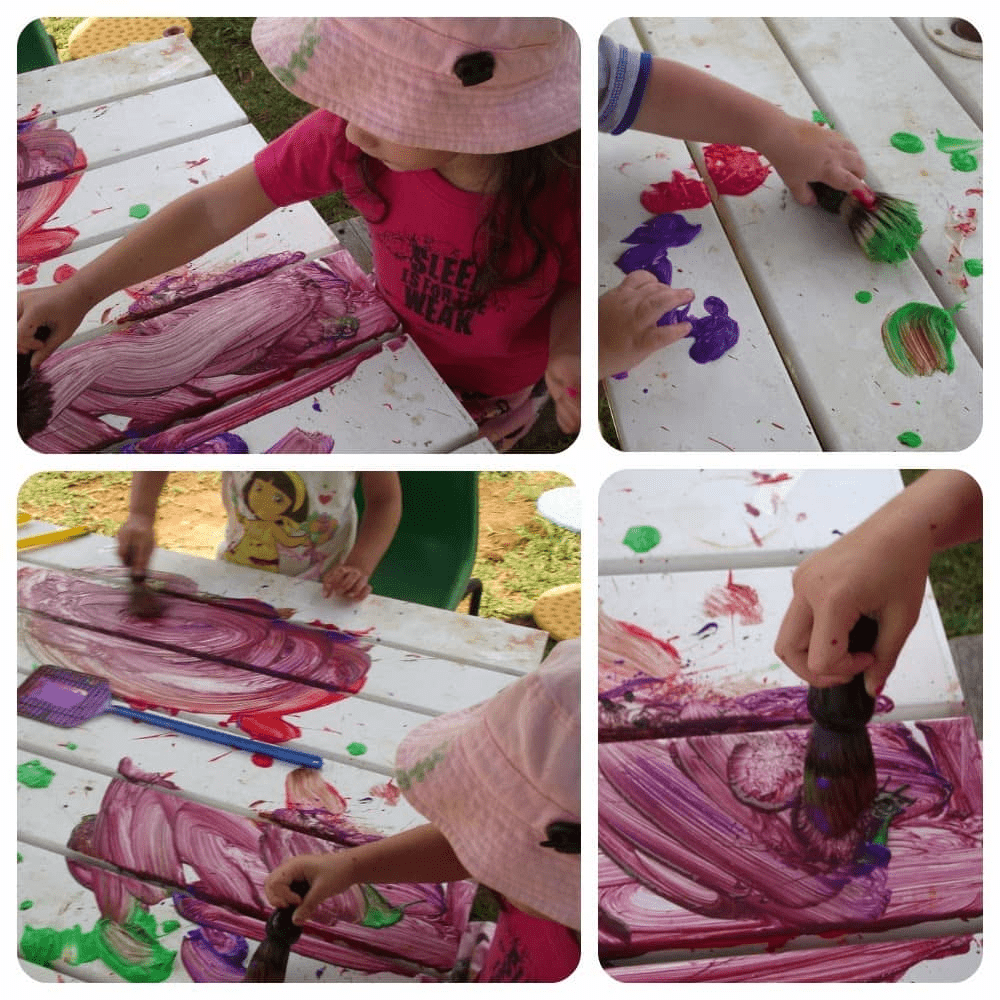
Shaving brushes are fantastic tools for little hands - easy to grip, light to pick up and still provide a barrier to the paint or texture.
You can also use them when clean to brush arms and legs - warn child first, some might like firm brushing, others light brushing.
What tools do you already use in your day to day play and activities that you could now include as part of your sensory toolkit to support children with their sensory integration and/or tactile challenges?
If sensory play and supporting sensory processing challenges is an area you would like to learn more about, click here to find out how you can watch my on demand workshop ‘How to Incorporate Simple Opportunities for Sensory Play Into Your Early Learning Program’.
You’ll find out how to Introduce Experiences, Materials & Environments That Give Children Everyday Opportunities To Engage, Explore & Regulate Using Their Sensory System.
I know that as early childhood educators, we can work together to slow the decline of sensory play AND ensure the opportunities and experiences we offer make a huge difference to the development, wellbeing and learning outcomes for young children.
Take a look at the other posts in The Empowered Educator Sensory Play & Processing Blog Series by clicking on the images below:

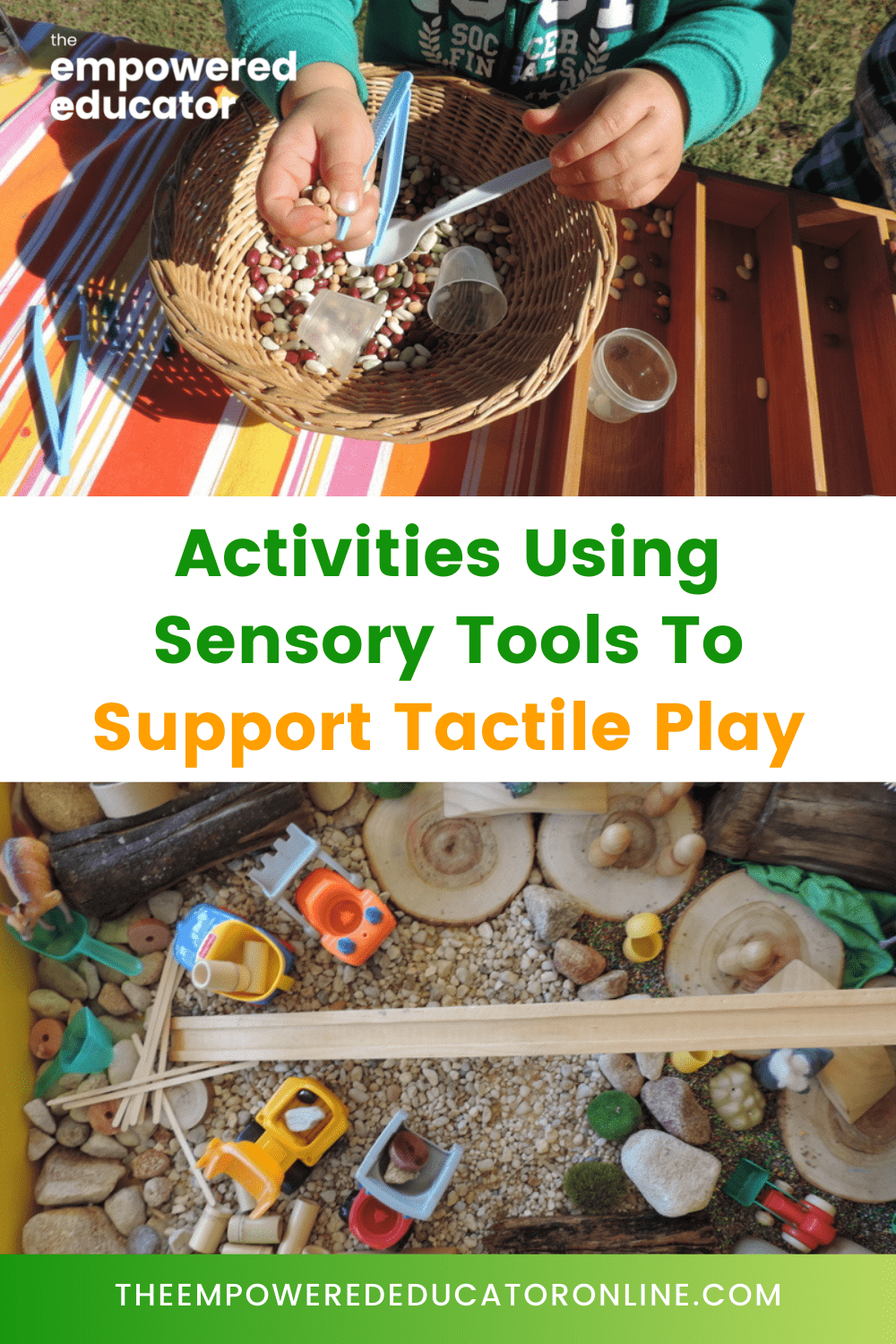
A Little About Me

Jodie Clarke is an early childhood professional supporting educators who want and need to stay passionate about the work they do! She has 30 years hands-on experience in the early childhood and human services sectors across many different roles.
Jodie is mum to 3 in Australia and has already helped thousands of educators with their work through her popular blog posts, activity ideas, online training and e-books.



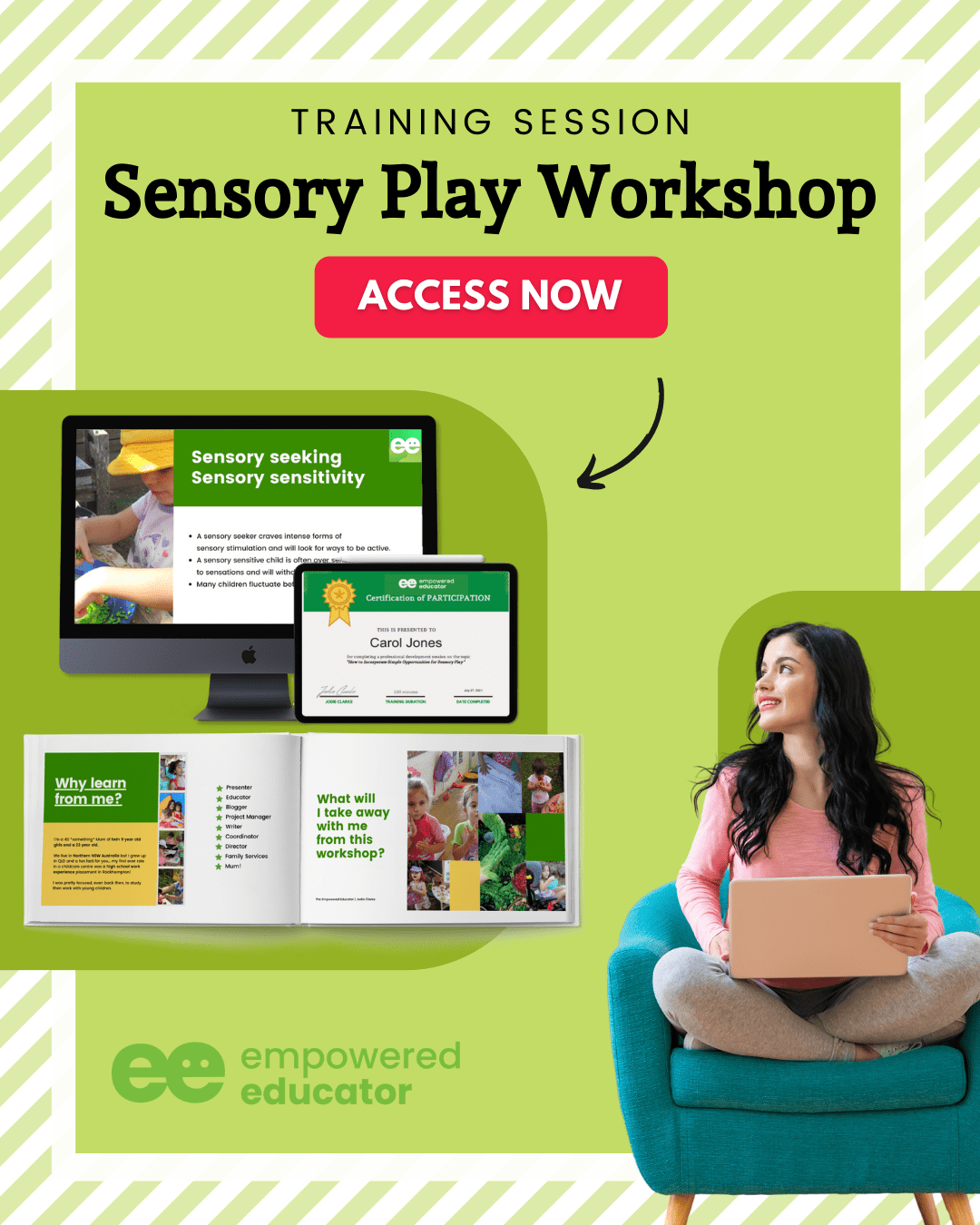
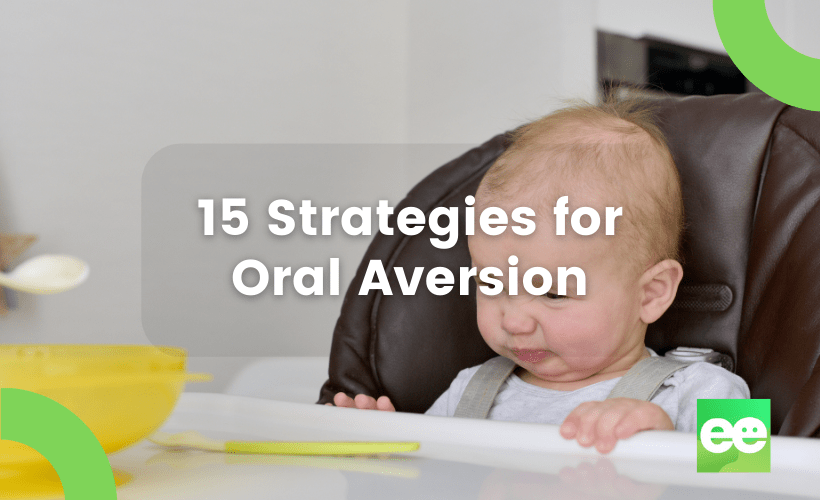
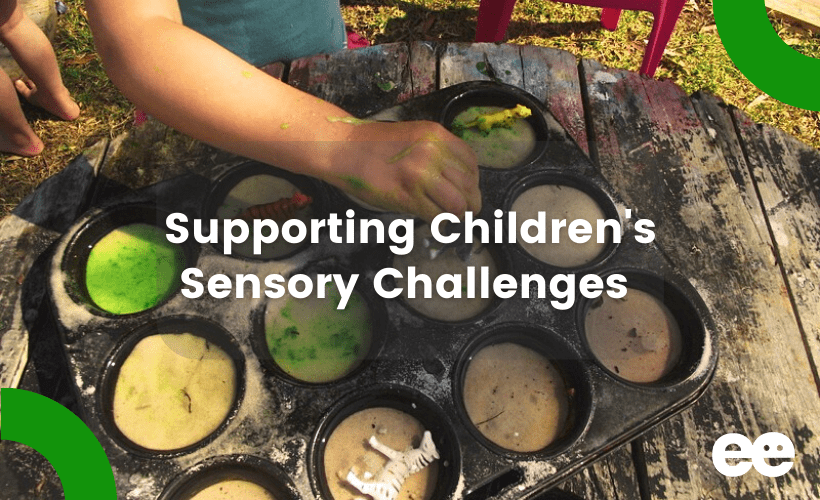
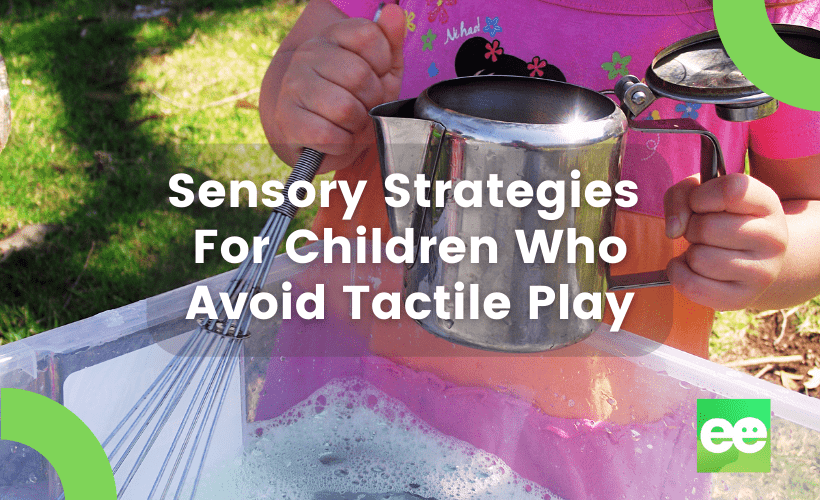
My mom was a pre-k teacher and she would always tell me how important it was for kids to be taught motor skills activities. She always planned a wide range of sensory activities, similar to many that you mentioned. Reading this reminded me of my mom and what she used to tell me. Can’t wait when I am a teacher myself, and I can do this with my kiddos!